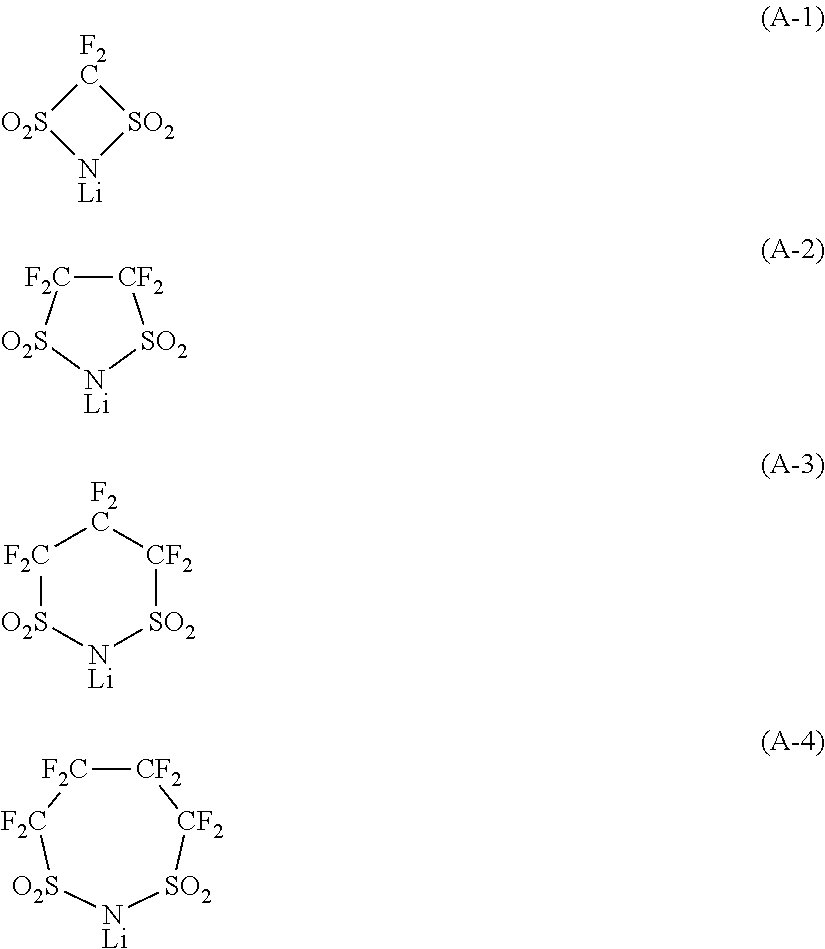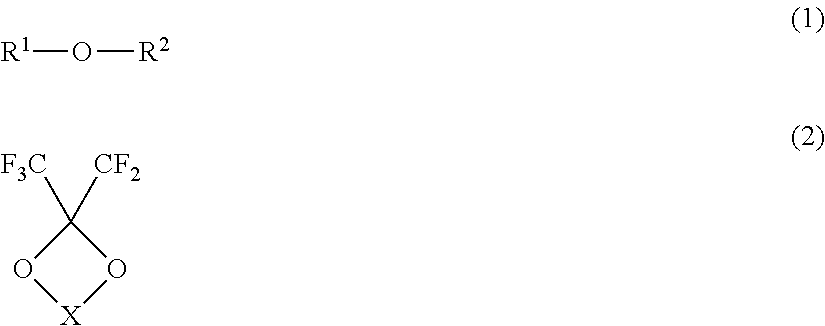Non-aqueous electrolyte solution for secondary batteries, and lithium ion secondary battery
- Summary
- Abstract
- Description
- Claims
- Application Information
AI Technical Summary
Benefits of technology
Problems solved by technology
Method used
Image
Examples
examples
[0240]Now, the present invention will be described in detail with reference to Examples. However, it should be understood that the present invention is by no means restricted by the following description.
example i
[0241]The solubility was evaluated by observing the state of dissolution of the non-aqueous electrolyte solution after expiration of one hour from the preparation of the non-aqueous electrolyte solution. In the evaluation, one uniformly dissolved was identified by “∘ (good)”, and one separated into two phases was identified by “x (no good)”.
[0242]The measurement of the conductivity (unit: S / m) was carried out with respect to the obtained non-aqueous electrolyte solution at 25° C. by a known method disclosed in “Molten Salts and High Temperature Chemistry, 2002, 45, 43”. That is, at both ends of a T-type electrochemical cell having a bottom length of 5 cm and an inner diameter of 4.8 mm, metal lithium-bonded electrodes were set. Thereafter, the prepared electrolyte solution was sufficiently injected, and the cell was sealed. The solution resistance in the obtained electrochemical cell was measured by a complex impedance method by using Potentiostat / Galvanostat (...
example ii
[0283]The following Examples are ones relating to an electrolyte solution containing a non-fluorinated cyclic carbonate compound. Ex. 1A to 5A are Examples of the present invention, and Ex. 6A and 7A are Comparative Examples.
Ex. 1A
[0284]LiPF6 (0.15 g) as a lithium salt was dispersed in CF3CH2OCF2CF2H (trade name: AE-3000, manufactured by Asahi Glass Company Limited) (1.02 g) as the compound (1), and then, γ-butyrolactone (0.34 g) as the compound (5) was mixed thereto to obtain a uniform solution. Then, to the solution, vinylene carbonate as the compound (6) was added to be 2 mass % to obtain a non-aqueous electrolyte solution 1A.
Ex. 2A to 7A
[0285]Non-aqueous electrolyte solutions 2A to 7A were obtained in the same manner as in Ex. 1A except that the composition of the lithium salt and various compounds was changed as shown in Table 7.
[0286]Further, abbreviations in Table 7 have the following meanings.
[0287]VC: vinylene carbonate
[0288]FEC: fluoroethylene carbonate
[0289]Others are the...
PUM
 Login to View More
Login to View More Abstract
Description
Claims
Application Information
 Login to View More
Login to View More - R&D
- Intellectual Property
- Life Sciences
- Materials
- Tech Scout
- Unparalleled Data Quality
- Higher Quality Content
- 60% Fewer Hallucinations
Browse by: Latest US Patents, China's latest patents, Technical Efficacy Thesaurus, Application Domain, Technology Topic, Popular Technical Reports.
© 2025 PatSnap. All rights reserved.Legal|Privacy policy|Modern Slavery Act Transparency Statement|Sitemap|About US| Contact US: help@patsnap.com



